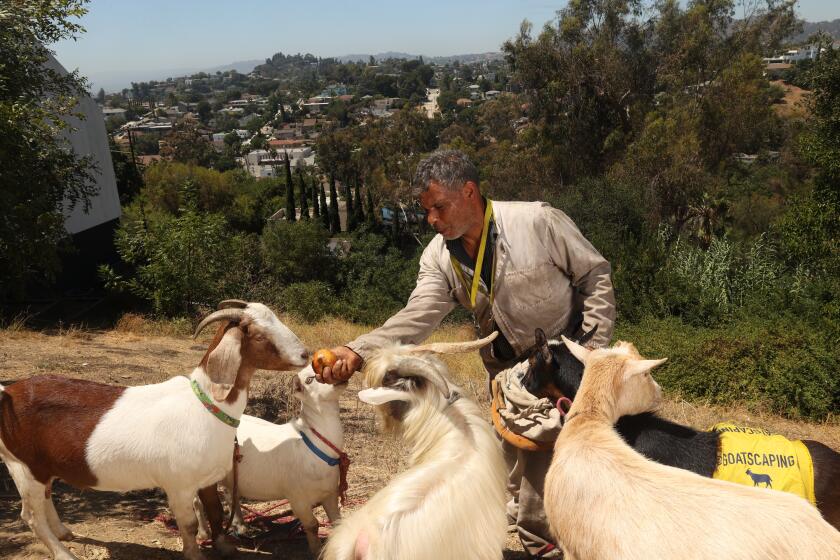U.S. Reduces Planned Spotted Owl Habitat
The government Monday scaled back by more than 25% the amount of Northwest forest land it says must be protected to save the threatened northern spotted owl from extinction.
But Mark Rey, executive director of the American Forest Resource Alliance, said the Fish and Wildlife Service’s new proposal covering 8.2 million acres “would still constitute the largest land grab in the nation’s history.”
Even with the smaller designated land base, the service estimated that by 1995 the region will have about 33,000 fewer timber-related jobs than was projected under forest management plans in effect in the spring of 1990.
The agency said that federal timber harvest levels in Oregon, Washington and Northern California will fall below 2 billion board feet--less than half the levels established in those 1990 plans.
The Fish and Wildlife Service announced that it was proposing the removal of 3 million acres of private land from its earlier recommendation that 11.6 million acres be designated as the owl’s critical habitat.
Also, it pulled out about 400,000 acres of state and tribal lands that were in the previous proposal--dropping the proposed habitat to 8.2 million acres across the three states.
“The service believes that federal and state land should be the principal focus of the owl critical habitat designation,” the agency said.
Environmentalists said the reduction was acceptable because it affects mainly private lands that already have been heavily logged and are home to relatively few of the remaining 3,000 pairs of owls.
“This is probably a good step forward for the future protection of the owl,” said Rindy O’Brien of The Wilderness Society. “While it drops out private lands, there is not much old growth left on private lands. By dropping it out, you still are preserving the core federal lands.”
Timber industry leaders said that the revised proposal would do little to soften the economic blow to the Northwest. The industry has projected that such dramatic logging cutbacks would cost the three states more than 100,000 jobs.
“Once again, U.S. Fish and Wildlife Service bureaucrats and biologists have released a proposal that would devastate the economy of the Pacific Northwest, placing tens of thousands of hard-working men and women on public assistance programs,” said Kirk Ewart of the Northwest Forest Resource Council in Portland, Ore.
Marvin Plenart, director of the Fish and Wildlife Service’s regional office in Portland, emphasized that logging is restricted, but not prohibited, within critical habitat areas. Any cutting within such areas must first be approved by the service.
The new proposal covers about 3.8 million acres in Oregon, 2.7 million acres in Washington and 1.8 million acres in California.
The service declared the owl a threatened species in June, 1990, citing excessive logging as the primary threat to its survival.
More to Read
Sign up for Essential California
The most important California stories and recommendations in your inbox every morning.
You may occasionally receive promotional content from the Los Angeles Times.





